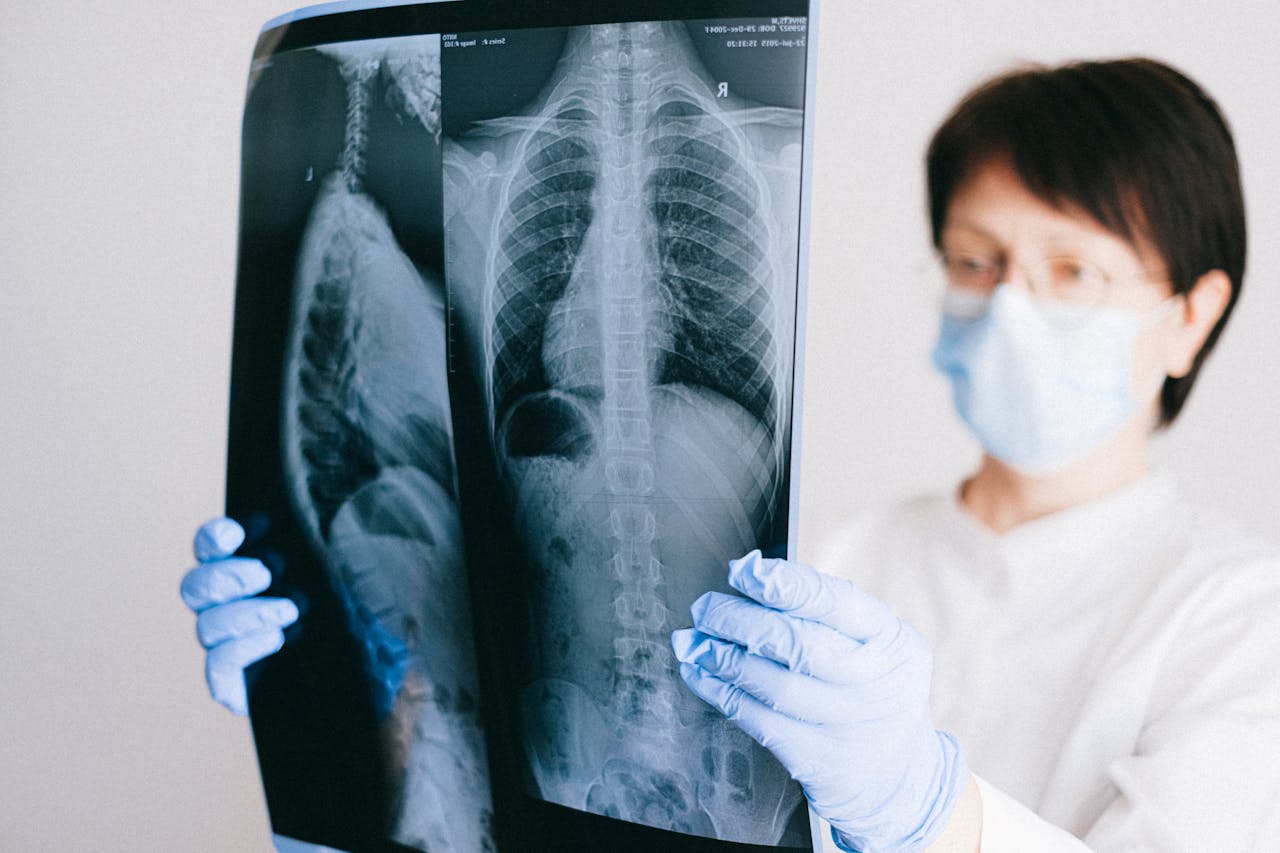What is Thymoma? Thymoma is a tumor originating from the thymus gland, which plays a critical role in the immune system and is responsible for the development of T lymphocytes. This rare tumor is often benign and tends to grow slowly, developing within a capsule that surrounds it. If treatment is delayed, the tumor may begin to spread beyond its capsule. You can find detailed answers to the question, “What is thymoma?” in the rest of this article.
What is Thymoma?

The thymus gland is one of the key components of the immune system up until puberty, responsible for the production of T lymphocytes. Located behind the sternum and in front of the heart, the gland loses its function and disappears after puberty. However, in some individuals, this disappearance does not occur, and it transforms into a tumor called thymoma. This provides a concise answer to the question, “What is thymoma?”
Thymoma is a rare tumor type that originates from the thymus gland and is mostly benign. In the first two stages, it remains confined within a capsule and does not affect surrounding tissues. During these stages, surgical removal facilitates treatment. In the latter two stages, the tumor spreads beyond the capsule and is considered malignant, requiring additional treatments alongside surgical interventions. In the final stage (stage four), surgery is rarely possible or entirely unfeasible. This is the summarized answer to the question, “What is thymoma?”
Stages of Thymoma
Thymoma has four different stages. Details of these stages are presented in the table below:
| Stage | Description |
|---|---|
| Stage 1 | The tumor is confined within a capsule. No symptoms are observed, and CT scans show smooth tumor boundaries. Surgical intervention is possible during this stage, often eliminating the need for additional treatments. Recurrence is rare. |
| Stage 2 | The capsule is damaged, and the tumor begins to extend outward. Distinguishing between stages one and two via CT imaging alone is not always possible. Surgery remains the primary treatment option at this stage. |
| Stage 3 | The tumor breaks through the capsule and starts spreading to surrounding structures, such as blood vessels, the pericardium, and the trachea. Both surgical intervention and radiotherapy are applied together. |
| Stage 4 | In stage 4A, the disease spreads to the lungs or pleura, known as pleural implants rather than metastases. In stage 4B, it spreads to other organs, which is defined as metastasis. |
Types of Thymoma
Thymoma is a rare type of cancer. Studies indicate its occurrence in the U.S. is approximately 1.5 per million people. The World Health Organization (WHO) has developed a classification system for this tumor based on the cells forming it. Details of the classification (types) are as follows:
- Type A: Cells have an oval or spindle-shaped appearance. This type accounts for 4-19% of all cases and is more common in older individuals. Myasthenia gravis accompanies 24% of cases.
- Type AB: One of the most common types, accounting for approximately 15-43% of cases. It consists of a combination of lymphocytes and epithelial cells. Myasthenia gravis accompanies 14% of these cases.
- Type B1: Known as lymphocyte-rich thymoma, where lymphocyte cells dominate, but thymus cells appear healthy. Accounts for 6-17% of all cases.
- Type B2: Contains numerous lymphocytes and abnormal thymus cells. This type accounts for approximately 20-36% of cases and shows no gender preference.
- Type B3: Contains atypical cells and is generally more aggressive. Known as epithelial thymoma, it accounts for 7-25% of cases.
- Type C: Malignant type with a generally poorer prognosis compared to other types.
What are the Symptoms of Thymoma?
 Thymoma symptoms are rare and often do not appear in many cases. In particular, early-stage symptoms are not expected. However, in rare cases, the symptoms include:
Thymoma symptoms are rare and often do not appear in many cases. In particular, early-stage symptoms are not expected. However, in rare cases, the symptoms include:
- Chest pain due to tumor growth and cough resembling bronchitis due to pressure on the trachea.
- Myasthenia gravis, a type of nerve communication disorder, occurs in approximately 15% of cases, causing difficulties in breathing, swallowing, and vision (drooping eyelids).
- Non-tumor-related skin rashes, anemia, and similar conditions may appear, referred to as paraneoplastic syndrome, which resolves after treatment.
- Superior vena cava (SVC) syndrome may occur due to the tumor pressing on the main vein that supplies blood to the heart, resulting in headache, dizziness, and swelling in visible veins, the face, and neck.
How is Thymoma Diagnosed?
Chest X-rays are insufficient for diagnosing thymoma. Computed tomography (CT) is used for detailed imaging. In some cases, magnetic resonance imaging (MRI) is also requested. If the tumor is identified as being in stage one or two based on CT or MRI, a biopsy is not performed, and surgery is directly carried out. For stage three or four cases, a biopsy is necessary to determine the tumor type, followed by appropriate treatments.
How is Thymoma Treated?
Treatment methods vary depending on the stage of the disease:
- Stages 1 and 2: The tumor is surgically removed, and additional treatments are generally unnecessary. Patients are monitored regularly for five years.
- Stage 3: Surgery is performed if the tumor can be fully removed, followed by radiotherapy. If surgery is not initially possible, chemotherapy and radiotherapy are applied to shrink the tumor.
- Stage 4: Surgery is rarely feasible. Treatment options include chemotherapy, immunotherapy, and radiotherapy.
How is Thymoma Surgery Performed?
 In the first two stages, surgery is the ideal treatment. A minimally invasive approach is used, with a small incision made for inserting a camera to locate and safely remove the tumor. The experience of the surgeon significantly impacts the success of the operation.
In the first two stages, surgery is the ideal treatment. A minimally invasive approach is used, with a small incision made for inserting a camera to locate and safely remove the tumor. The experience of the surgeon significantly impacts the success of the operation.
The doctor’s experience is critical to the success of the surgery. Prof. Dr. Semih Halezeroğlu has significant experience at this point and performs the operations closed through a single incision. In this way, the recovery period of the patients is shorter and the possibility of complications is less. You can contact us to get detailed information about the treatment methods and what is thymoma.
Frequently Asked Questions About Thymoma
Frequently asked questions and answers about what is thymoma are listed below.
What is Thymoma?
Thymoma is a disease where the thymus gland transforms into a tumor instead of shrinking and disappearing after puberty.
Is Thymoma Fatal?
Early-stage thymoma has high treatment success rates. However, in advanced stages, the disease can spread and lead to severe outcomes if untreated.
What are the Symptoms of Thymus Gland Diseases?
Symptoms include cough, shortness of breath, swelling in the neck and face, and nerve-related issues like difficulty swallowing or breathing.
What is Type B2 Thymoma?
This type contains many lymphocytes and abnormal thymus cells, accounting for 20-36% of cases.
Is Thymoma a Type of Cancer?
Yes, thymoma is considered a cancer, particularly in its advanced stages with metastatic potential.



